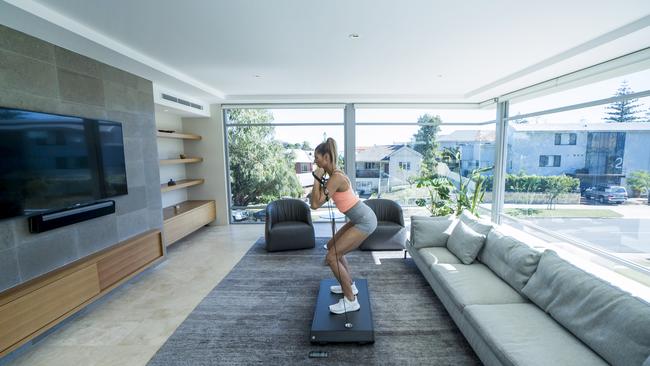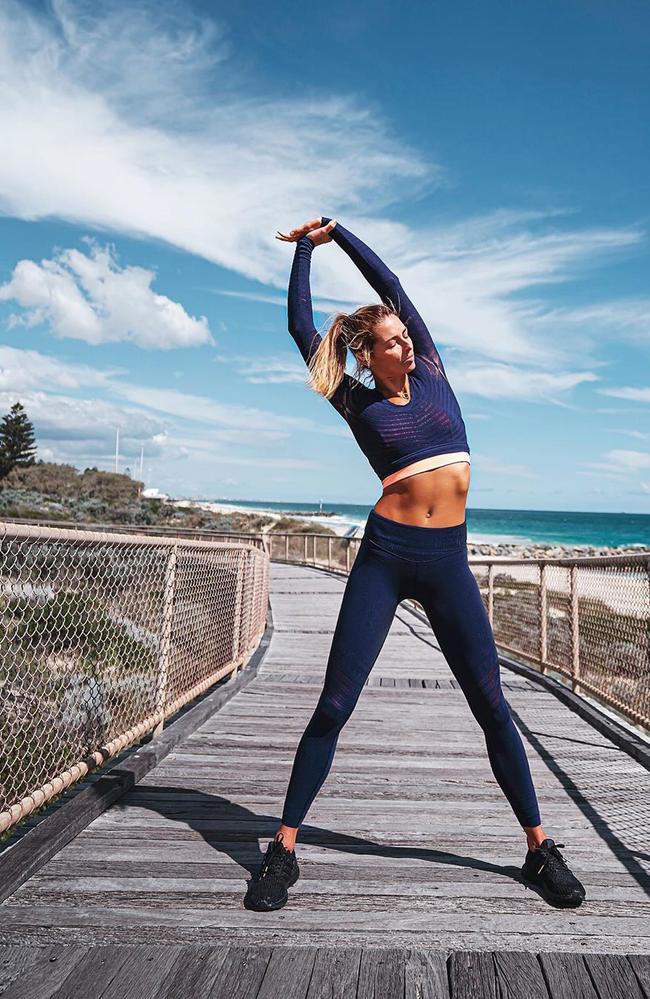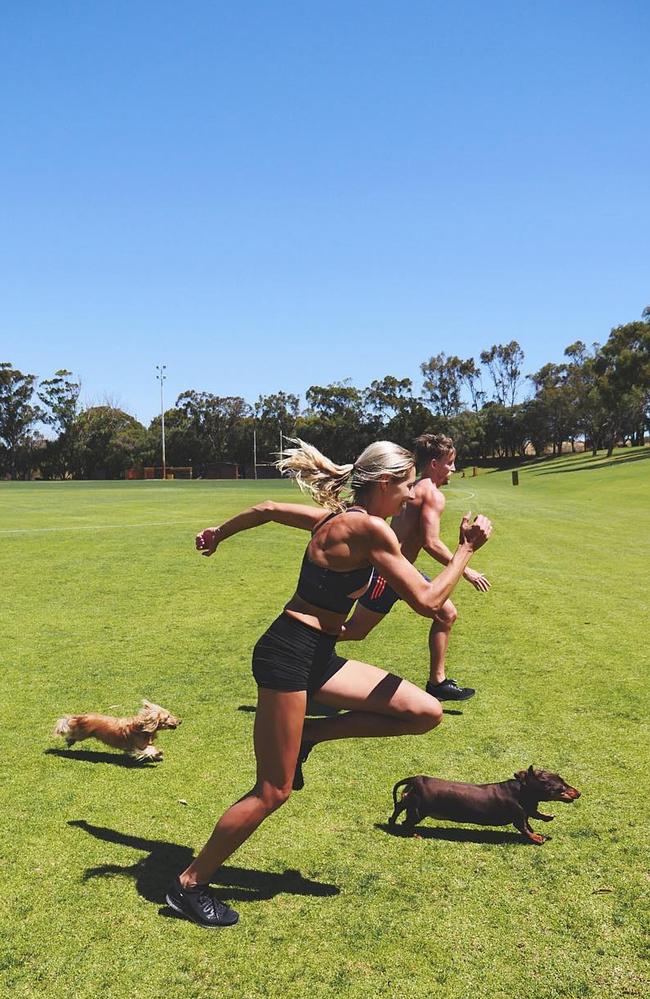YOU GOT THIS: Amanda Bisk’s world turned upside down when she was diagnosed with chronic fatigue
Amanda Bisk was training eight hours a day in the hopes of becoming an Olympic athlete before a shock diagnosis forced her to quit.
Illness
Don't miss out on the headlines from Illness. Followed categories will be added to My News.
Welcome to You Got This, news.com.au’s weekly slice of fitness inspiration featuring tips and advice from real women who’ve experienced it all.
Amanda Bisk was on top of the world.
The professional pole vaulter had returned from representing Australia at the 2010 Commonwealth Games in New Delhi, India with her eyes immediately set on the London Olympics.
She had started the first block of training towards her hopes of becoming an Olympic athlete, but her dream came to a sudden end after a shock diagnosis left her unable to train, forcing the then 25-year-old to quit the sport.
“I was sleeping 12 hours a night, waking up puffy and exhausted then slowly I’d start feeling this anxiety about going to training and as an athlete, that was the worst feeling,” Ms Bisk told news.com.au
RELATED: Mum’s staggering weight loss in one photo
RELATED: Warning signs spark incredible weight loss

“That was when I knew something was wrong and eventually, after nine months of feeling like this I was diagnosed with chronic fatigue.”
Despite quitting her dream sport and not doing any form of training for the next few years, Ms Bisk challenged her body in another way which ultimately changed her life forever.
The 34-year-old said it was one of the most toughest experiences of her life, but revealed how she persevered to become one of Australia’s most successful yoga and pilates instructors.
“I was really tired and I found I couldn’t push in any of the training sessions and this was so weird for me,” she said about her chronic fatigue. “I am usually that person full of energy saying, ‘Let’s do this’,” she said.

At the time, Ms Bisk worked closely with the Australian Institute of Sport’s doctor and her coach to deload training sessions by half.
But after six months and endless visits to specialists she was still struggling.
She went from training up to eight hours a day which included heavy gym sessions and pole vaulting practise, to nothing for the next few years.
“I remember the moment, a concrete moment, where I had a box of antidepressants I was prescribed and I knew if I took them I’d go on a journey masking how I really felt, or I would make one of hardest decisions I’ve ever had to make and take break from sport.”
She did the latter not realising it would mark the beginning of her retirement as a professional pole vaulter.
“I was so emotional but I realised it was my body telling me to stop,” she said.
“I couldn’t even go to the track when my friends were competing. I was so upset. It was such an emotional time in my life and from there I made it my mission to heal myself because no one could give me that journey.”

BITTER SWEET DIAGNOSIS
The following years left Ms Bisk emotionally distraught as she came to accept her condition.
“That for me as an athlete was so hard, because you are wired to never give up and push through,” she said.
“But I needed tostop training and remove myself from the pressure I was putting on my body and mind and it took me about five months to understand that.”
Depending on her weekly training targets, Ms Bisk’s routine involved two pole vault sessions, gymnastics and strength training between six and eight hours a day.
“When I retired I felt like I lost my identity – to have it all taken away was such a shock but when I look back now it was a blessing in disguise.”

After 10 years, Ms Bisk went on to become a successful yoga instructor, having also recently developed a popular fitness app called, Fresh Body Fit Mind.
“I am still able to be active, but if I continued I would have burned myself to the ground and been sick longer, so it kind of saved me.
“I am a yoga teacher, I am PT, an exercise physiologist, I am doing all these fun amazing exercise-related things I don’t think would have been possible had I gone down another path.”
Ms Bisk took a few free yoga classes before discovering ways to use the exercise to manage her condition.
RELATED: Tired mum’s late night Macca’s ‘mistake’
RELATED: Yoga essentials for beginners



“I find yoga helps me build a connection between my mind and body and that being gentle with myself was okay – and that was the turning point for me,” she said.
“I balanced it with eating better, and really looking after myself by seeing a chiropractor and physio, and that’s what I believe really helped me.
“So many people to this day ask what I did to ‘fix’ my chronic fatigue, and for anyone who battles it, they will tell you there’s no one answer.
“I researched more about food and what I was eating, and how it affected my body and mind.”
In 2014 Ms Bisk switched to a vegetarian diet while researching ways to manage her chronic fatigue.
“When I was unwell it was a big priority for me to understand about foods and that’s also what changed everything for me – I now see each meal as a chance to heal my body and feed it healthy and nourishing food.”

RELATED: Best fitness trackers
She said while everyone is not the same, she felt an instant change to her body and sleeping patterns the moment she ditched meat and started to eat plant-based foods.
“I felt a lot lighter – not necessarily weight loss – but my system felt a lot more cleaner and I felt good.”
The 34-year-old’s training regimen now consists of a variety of exercises from practising her much-loved yoga, to using her Vitruvian Form weights machine and doing two HIT sessions a week.



However, she does this all while listening to her body whenever it needs a break.
“I try and do stretching and yoga everyday – it’s a really important factor in balancing out training.”
Ms Bisk said that while her diagnosis rocked her world at the time, 10 years on she feels in the best shape of her life – physically and mentally.
“I might not be as strong or quick as when I was an athlete, but my body feels sound and balanced.
“In the end, balance is most important thing and I feel great.”
If you’ve got a transformation story you’d like to share, get in touch with shireen.khalil@news.com.au
Originally published as YOU GOT THIS: Amanda Bisk’s world turned upside down when she was diagnosed with chronic fatigue

